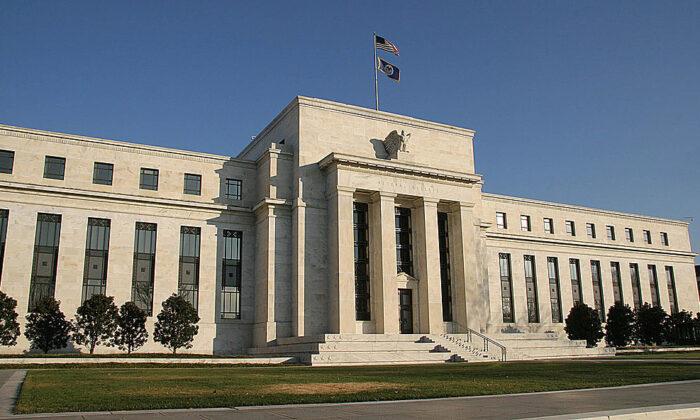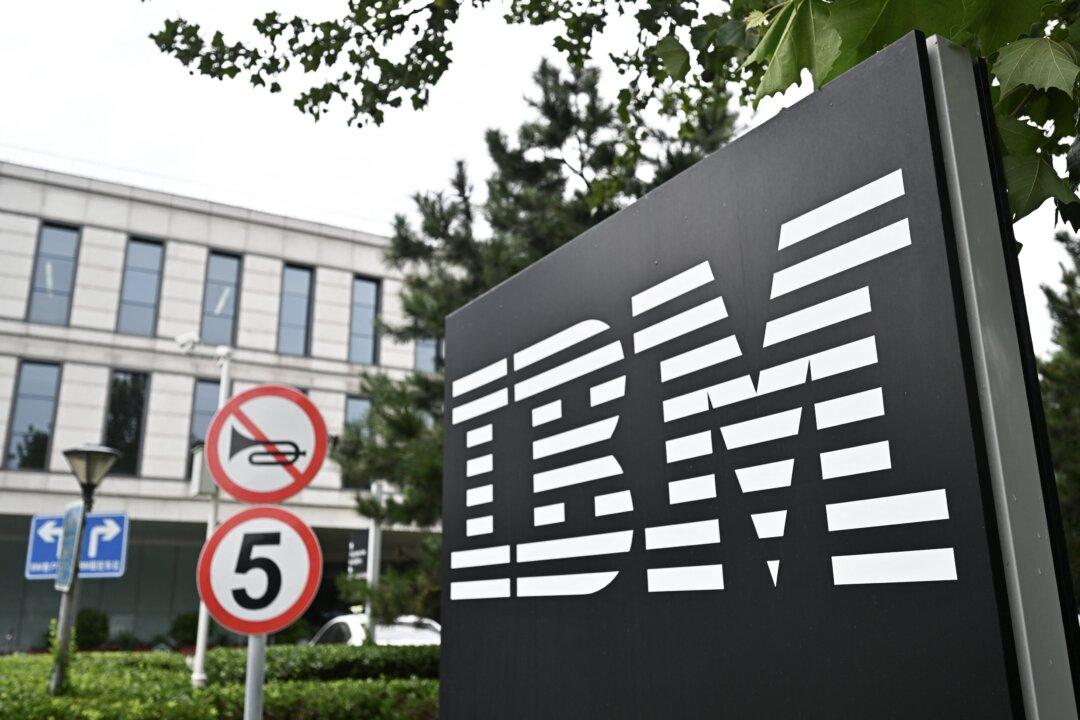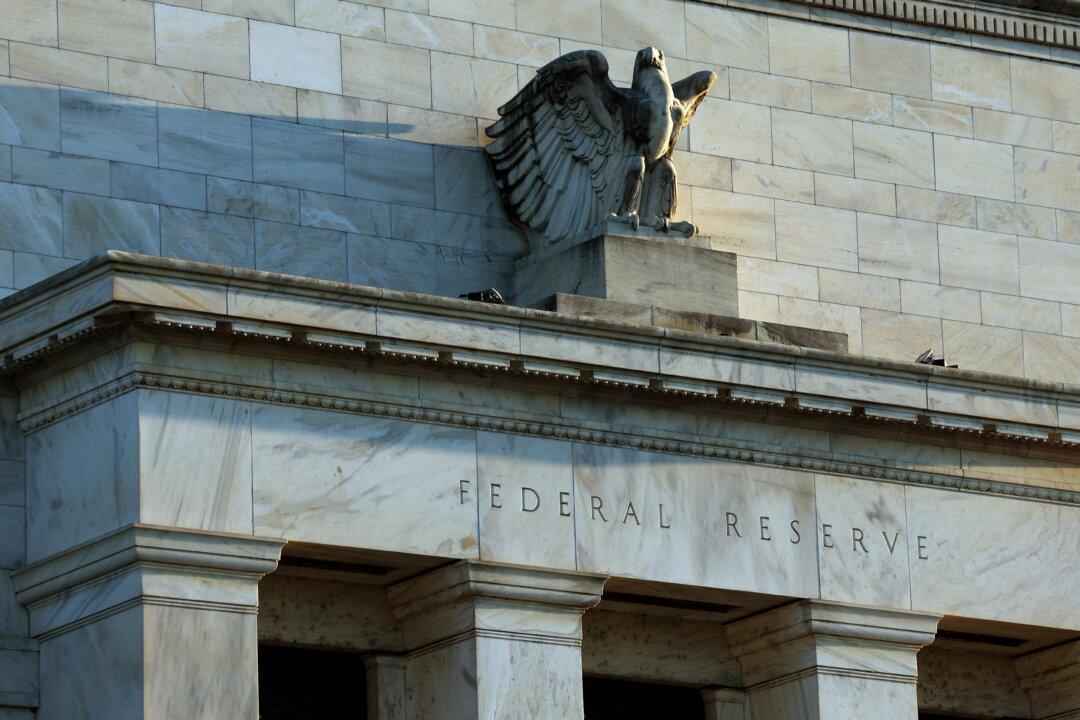Federal Reserve policy has at last begun to address building inflationary pressures.
Though Fed Chairman Jerome Powell continues to dismiss the recent inflationary spike as “transitory” and as nothing to warrant a policy adjustment, the Fed has made in the past few weeks anti-inflation efforts to absorb some of the liquidity the central bank has poured on markets in the past. This latest change will fall short of needs should the inflation persist, but the policy move, tentative though it is, shows a welcome responsiveness that, until now, had been absent.
This latest action hardly constitutes a major policy shift. Nor should the Fed make one just now. To be sure, inflationary pressures have developed in 2021. The Labor Department’s consumer price index has risen at more than a 7 percent annual rate thus far, significantly faster than it has at any time in more than almost two decades.
The same could be said for the producer price index, which is up at a double-digit annual rate thus far in 2021. Just about every other inflation indicator traces the same pattern. As concerning as that is, it might yet be “transitory,” as Powell never tires of saying. If the Fed is wise to have moved, it’s also wise to make its change gradually.
And that’s just what policymakers have done. They left interest rates low, no doubt because a rise in rates would have called attention to their inflation concerns and could have caused panic in financial markets. Policymakers have instead begun to sell some of the bonds they had previously bought under the programs the Fed has called “quantitative easing.” Technically, the measures they’ve initiated are called “reverse repurchase agreements.”
What’s more important than the technicalities, however, is that those sales, in classic anti-inflationary fashion, have drawn liquidity out of financial markets. The effect has already shown in the economy’s money supply, the key link, both historically and, in theory, to inflation.
The broad M2 measure of money, which had been growing at a 25 percent annual rate, has slowed during the spring quarter to about a 10 percent annual rate of growth. The policy adjustment has found reinforcement in statements by two regional Fed presidents. Mary Daly of the San Francisco Fed and Robert Kaplan of the Dallas Fed have each indicated that bond purchases, in general, should begin to taper off before year-end.

Recent Fed actions and the statements by those two high officials, though reasonable and welcome under the circumstances, nonetheless surprise, for they fly in the face of Powell’s statements, as well as the rhetoric flowing out of the Biden administration.
Both Powell and Treasury Secretary Janet Yellen have insisted that the recent inflation spike is purely a statistical artifact of supply interruptions caused by the pandemic and that it won’t last. Even President Joe Biden has gotten into the act, assuring people that the inflation was “expected” and it’s expected to dissipate soon.
One might wonder what the president means by “expected,” since the 2021 inflation spike failed to appear in either the past year’s economic projections from the White House Budget Office or the Fed. Now, two regional Fed presidents and policy actions have effectively called such claims misleading at best and just plain silly at worst, though no one has used such words.
The rhetoric will surely change if inflation persists, and the Fed will have to enlarge greatly on this recent policy shift. The danger is just too great. As anyone who has lived through the great inflation of the 1970s and 1980s or has studied that time knows, inflation debilitates economies. It creates planning uncertainties that discourage expansion and investment plans.
Because financial assets are denominated in dollars that the inflation is depreciating, investors flee stocks and especially bonds and go into real estate and assets that they believe will keep up with the rising cost of living. Both trends distort the economy, as well as the allocation of financial resources.
Worse, once people begin to expect inflation, it takes on a life of its own. It creeps into wage demands, and, because businesses expect to get price increases, induces managements to readily grant such demands. This mélange of effects limits the nation’s long-term productive potential. Perhaps, today’s real estate surge is a sign that this kind of unproductive adjustment has already begun.
Should it become necessary, an anti-inflation campaign would involve policymakers in a tough fight indeed, tougher perhaps than the last time the Fed had to do so in the 1980s. This time, such an effort would have to reverse a good part of the inflationary fuel built up over decades in which the Fed has poured liquidity into markets.
Worse, the Fed would have to do this in the face of conditions that have loosened the links between policy and the economy and that weren’t present during the last anti-inflation fight. Primary among those is the practice adopted in 2008 of paying banks interest on the reserves they leave on deposit at the Fed.
Because the Fed’s easy money policy has built on itself for years, moderating it would alone present a monumental task. After all, the easy money policies began as far back as the 2008 financial crisis. Then, of course, the Fed had little choice but to push interest rates down to zero and redouble the monetary ease by directly entering markets to buy bonds.
Without that help, markets would have collapsed and dragged the whole economy down with them. As it is, the country suffered the worst recession since the Great Depression. Normally, the Fed would have unwound such policies once the economic recovery began, but the recovery following the financial crisis of 2008–09 was so slow that policymakers kept the extreme stimulus going.
Tentative efforts to moderate the extent of monetary ease did begin in 2014, but only very gradually. Then in 2019, policy again became easy, ostensibly to alleviate the strains of the “trade war” with China. The pandemic in 2020 brought a return to zero interest rates and still greater injections of liquidity into markets.

Unwinding the effects of that tsunami of liquidity would be difficult under any circumstances, but that’s especially true now, because of the Fed’s 2008 decision to begin paying interest on the reserves that banks keep at the Fed. When the Fed paid no interest on those deposits, policy management was more straightforward. Banks, because they earned nothing on their reserve deposits, kept them to the minimum required by law. All the reserves the Fed injected into the system were lent out promptly and affected the economy almost as fast, while those the Fed reabsorbed just as quickly caused banks to pull back from lending.
But since the Fed started to pay interest on the deposits, that close relationship has loosened. Because reserves now earn a return, banks have accumulated them, sometimes blunting the effect of liquidity injections on the economy, but also creating a cushion against any future liquidity withdrawals by the Fed. At present, more than 90 percent of the reserves held by banks at the Fed are in excess of the amounts required by law. Should the banks flow those excess reserves back into lending, they could easily confound any anti-inflation efforts to remove liquidity from the system.
As silly as Washington’s easy dismissals sound, it’s easy to understand why Powell and the Biden administration would rather not take the inflation news seriously. A more sober response would require Powell and others to explain how policy might change to cope, and that, in turn, would force them to describe the difficult situation the Fed faces, especially how it’s, at least in part, of the Fed’s own making.
Though behind that smokescreen policymakers have begun to act, the steps the Fed has taken so far, as should be clear, will hardly be enough if the inflation lasts. A little more transparency from Washington’s “experts” might ease the necessary policy transition, but getting that is probably more difficult than even the inflation fight would be.





